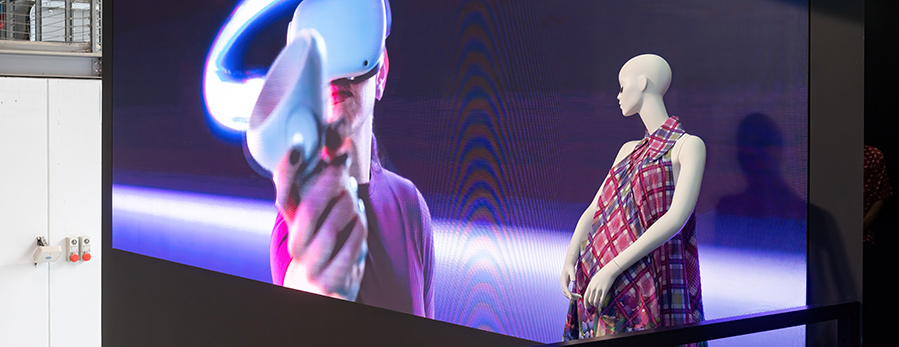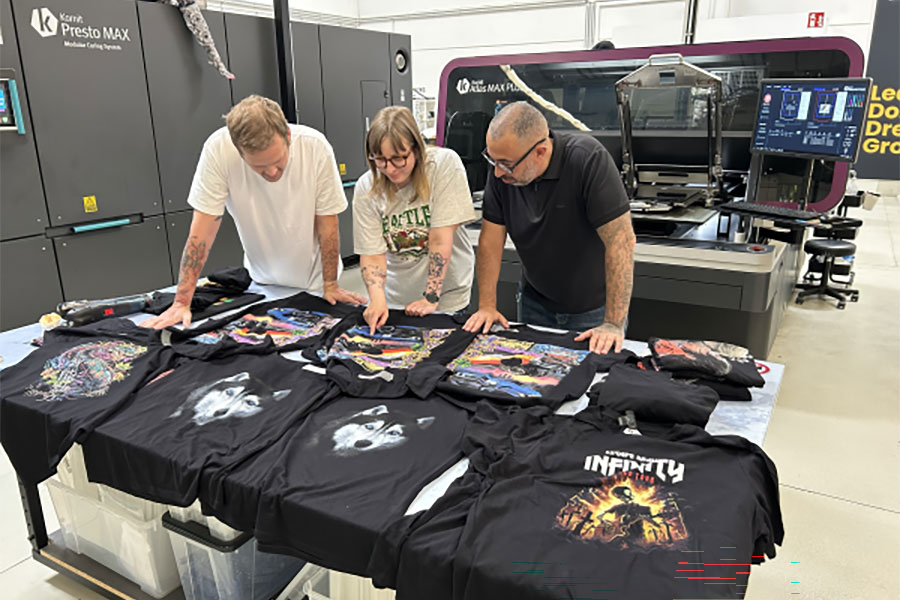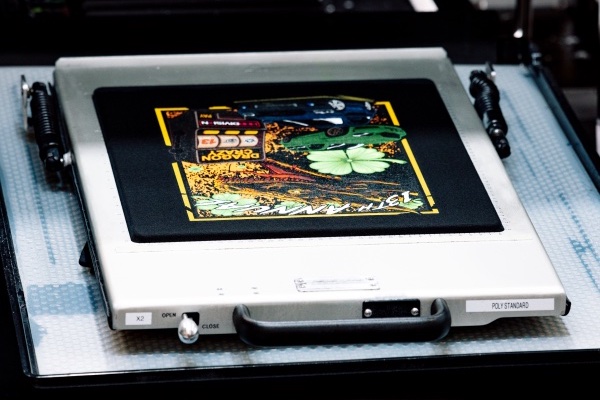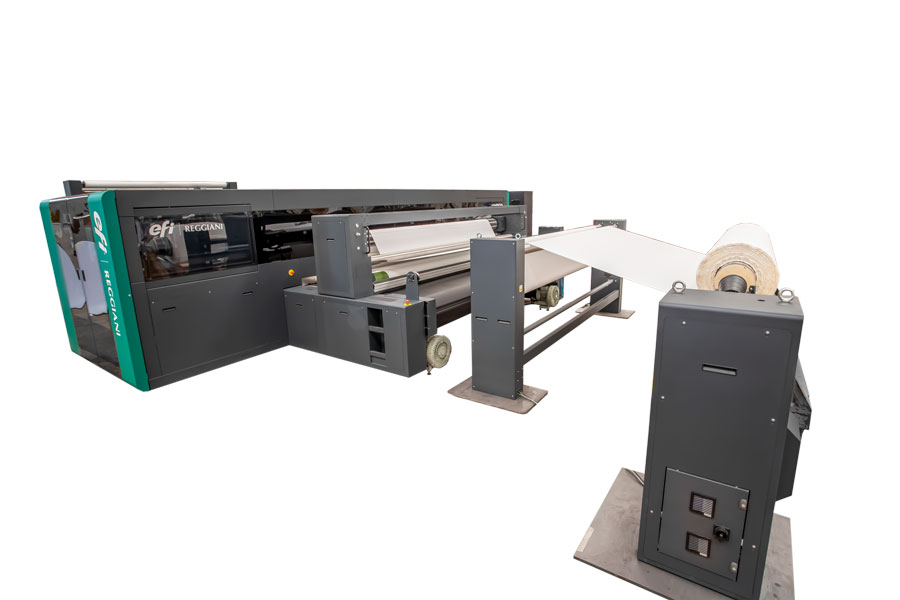#Digital Printing
Moving at the speed of culture…The rise of a digital supply chain

by Chris Govier, President at Kornit Digital Europe
It’s no secret that the World Economic Forum estimates fashion and textiles make up 10 percent of the world’s carbon emissions. If that weren’t bad enough, more than 85 percent of all textiles produced go into dumpsters each year. And while that’s no revelation for those familiar with the industry, what may be surprising is there’s little being done to change this dynamic – despite the call for change.

On the contrary, the Harvard Business Review notes the industry is actually moving BACKWARDS – with reports indicating the call for sustainable fashion hasn’t translated during the past two decades. Production of shorts and shoes creates more waste than ever before – with 75% of items produced ultimately being burned or buried in landfills.
So, the question is still, why is material change not happening? Clearly a lack of widespread legislation to incentivize or force change still is a key gap. One small point of light is the recently proposed New York Fabric Act mandating the industry shape up or suffer the consequences. If passed, the legislation will require fashion retail sellers and manufacturers to fully disclose all environmental and social diligence policies. In France, emerging is Digital ID, a unique code existing as a twin both on the garment and in the cloud – allowing for universal traceability of products to slow down waste in the fashion industry. But as they say, actions speak louder than words. And in today’s day and age with a new world of creators calling the shots, Kornit believes the time is coming for change that must be targeted and measurable, while also being broad enough to reflect the truly global supply chain upon which the fashion industry relies.
The good news is that the demand side of the market is likely to become a major driving force simply because mass customization, the velocity of changing consumer preferences, and the need to respond immediately will force more nearshore and onshore production. It’s the only way brands and creatives can compete and win in this new demand model.
With the world experiencing a digital transformation like never before, we at Kornit Digital believe culture is leading the way in change across industries. The post-COVID world saw an acceleration in the creator economy like none of us could’ve imagined. The digital-native generation has come of age, and their revolutionary mindset is making its presence felt. According to Statista, TikTok grew nearly twofold among those aged 15-25 after COVID hit, and brands are challenged to effectively engage these new creators (and consumers). One of Kornit’s most successful customers, a custom-designed fabrics provider called Spoonflower—now a subsidiary of Shutterfly—once spoke of an “Etsy army” that had populated their design library with 1.8 million digital creations, each of them ready to print on demand, to be fashioned into any number of do-it-yourself garments, accessories, home goods, or other textile products.
Customers demand immediacy, capturing the moment as it’s experienced. They don’t want to wait weeks or even months to share what they feel. Just look at the music industry. A song plays; it elicits specific emotions and times that make people happy or sad. They want to keep that feeling going, embrace it. Listeners can make this happen by downloading songs or videos quickly and easily. The immediacy of culture is finally matched by the technology and processes to make it happen. Industry can move at the speed of culture.
This culture shift is taking place across almost all creative industries – from music to art. Consumers get what they want, when they want it. Unfortunately, the one industry that has yet to catch up is fashion and apparel. That’s due to an analog supply chain built for the old way of production. Recently, Kornit Digital attended a popular fashion and textile sourcing event in New York. During one very insightful panel, William Brenninkmeyer, Global Sourcing Manager and Lead of Innovation at C&A, noted, “Chasing trends is impossible with an analog supply chain, where the lead time is 6-8 months. But digital production technologies now enable on-demand fulfillment, so you can bring concepts to production to consumer in two days. It’s incredible.”
This new model taking shape is being driven by digital production. Digital on-demand production from companies like Kornit Digital – empowering producers to channel digital creator and consumer data encompassing buying behaviors, social media listening, and more into a fulfillment strategy – answers demand for a digital supply chain with greater agility and efficacy than the traditional 18-month forecast cycle. Furthermore, it answers the sustainability imperative by aligning supply with demand, thus minimizing the waste that inevitably comes from forecast-based production. The approach also makes it possible to unleash customization and personalization for micro-communities and even the individual. This means both capitalizing on the cultural zeitgeist and creating serious benefits for retailers like C&A.
In this same session, Aaron Day, CEO of Amaze Software, echoed these thoughts: “The analog supply chain was built to meet a certain need at a certain time, but that world has been disrupted by a cultural shift. When you account for all the associated costs, I think we’re nearing a tipping point where an on-demand t-shirt can be produced cheaper than one produced using a traditional printing press.”
For those just entering the industry, adoption of digital processes might not be that difficult. Companies leading with digital production can fully embrace the power of “phygital” technology, which bridges the gap between digitally created imagery and physical fulfillment of those concepts. This production model very effectively allows for authentication and incorporation of emerging trends like AI and NFTs. But what if you’re an old-school producer born and raised on the physical supply chain?
While these exciting technologies are a natural partner for brands with a considerable e-commerce footprint, the challenge is far greater for retailers whose sales model stays tethered to the fortunes of the physical, brick-and-mortar store. Consider European-based retail powerhouse C&A. Founded more than 180 years ago, with more than 1,200 physical locations worldwide, C&A embodies every attribute of powerful retail production - yet is still vulnerable in the age of a web-driven “retail apocalypse.” Counterintuitively, such a business sees considerable upside in Web3 technologies that lean into digital transformation, which tap into both emerging consumer trends and individualized content creation.
According to Brenninkmeyer, C&A is investing heavily in digitization to drive “rightshoring” for tailoring fulfillment strategies based on the most effective means of serving different customers and brands. Directly addressing the needs of a creator economy – and fighting legacy challenges of overproduction, sustainability, and inefficient supply chains – on-demand, digital production makes it possible to digitize key pieces of their supply chains to adopt nearshoring more rapidly. This not only helps eliminate supply chain disruptions, but finally capitalize on the demand for a more sustainable and efficient industry – sidestepping “greenwashing” concerns by making the more sustainable alternative one that also ensures more robust profit margins, as well.
The same shift is playing out industry wide. Look no further than legacy brands like Nike and Gucci that are going “all-in” on NFTs and artificial intelligence. These brands realize this culture shift is demanding change in the way creators engage and produce. For these companies, it may not be a matter of fully adopting digital supply chains, but rather adopting those pieces that work best for them. Companies are evaluating all new options on the table to avoid wasting time on things that won’t work – and zeroing in on technology that moves the needle the most.
The growing ecosystem of available digital technologies provides brands – from the designer who came of age in a digital world and dreams of establishing her own fashion label, to the legacy retailer established before the advent of streetlights – with the capabilities to join and profit from the creator economy; deliver brilliant, uncompromising, high-quality physical goods; and better align demand with supply, eliminating overproduction waste. They can make the products people want, getting it into their hands faster, and minimizing the risks associated with today’s globalized marketplace.
And it’s all happening now…moving fashion at the speed of digital culture.















